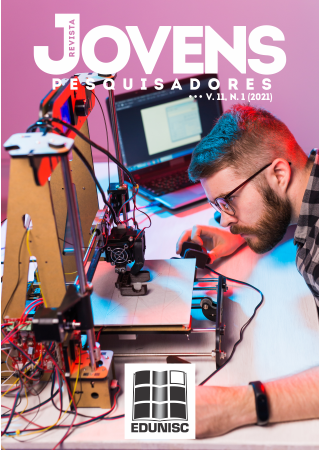ASYPTOMATIC CASES AMONG SARS-COV-2 INFECTED IN SCS: A POPULATION BASED STUDY
DOI:
https://doi.org/10.17058/rjp.v11i1.16790Keywords:
COVID-19. SARS-CoV-2, Assintomático, Sintomas, Transmissão,Abstract
The SARS-CoV-2 virus began the COVID-19 pandemic, a disease marked by its high transmissibility and common symptoms as fever, coryza, headache and respiratory discomfort, also presenting a high number of asymptomatic cases. In addition, the objective was identify the prevalence of asymptomatic cases among SARS-CoV-2 infected in Santa Cruz do Sul (SCS). The research is a population-based study profile which measured the SARS-CoV-2 seroprevalence through a qualitative detection of IgG and IgM by rapid testing in the central region of Rio Grande do Sul. The research also included sociodemographic and symptomatic data. In SCS, the sample was composed by 386 individuals on each stage of the study. This research followed all the ethics precepts. Accordingly, among the interviewed individuals, 28 tested positive for COVID-19. 12 (42,8%) of these did not manifest any characteristical clinical symptoms, only 5% presented three or more clinical symptoms. The average age of the interviewed was 49,5 (±19), in which 62,7% were female and 80,4% lived at the urban área. Regarding the presence of symptoms related to COVID-19, was verified that 70% of the interviewed individuals did not presented any symptom over the three stages. In conclusion, the collected data evaluation in this research confirmed the population testing requirement to distinguish between symptomatic and asymptomatic cases, once they represent an important portion of the positive individuals for the infection, composing a remarkable spreading agent of the disease, regardless of the immunoglobulin distinction.
Downloads
Downloads
Published
Issue
Section
License
A submissão de originais para este periódico implica na transferência, pelos autores, dos direitos de publicação impressa e digital. Os direitos autorais para os artigos publicados são do autor, com direitos do periódico sobre a primeira publicação. Os autores somente poderão utilizar os mesmos resultados em outras publicações indicando claramente este periódico como o meio da publicação original. Em virtude de sermos um periódico de acesso aberto, permite-se o uso gratuito dos artigos em aplicações educacionais e científicas desde que citada a fonte conforme a licença CC-BY da Creative Commons. Creative Commons Atribuição 4.0 Internacional.
Creative Commons Atribuição 4.0 Internacional.


